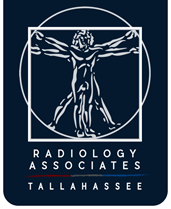Carotid Ultrasound
Carotid ultrasound uses sound waves to produce pictures of the carotid arteries in the neck which carry blood from the heart to the brain. It’s most frequently used to screen patients for blockage or narrowing of the carotid arteries, a condition called stenosis which may increase the risk of stroke.
Learn More About Carotid Ultrasound
The carotid ultrasound is most frequently performed to detect narrowing, or stenosis, of the carotid artery, a condition that substantially increases the risk of stroke.
The major goal of carotid ultrasound is to screen patients for blockage or narrowing of their carotid arteries, which if present may increase their risk of having a stroke. If a significant narrowing is detected, a comprehensive treatment may be initiated.
It may also be performed if a patient has high blood pressure or a carotid bruit (pronounced brU-E)—an abnormal sound in the neck that is heard with the stethoscope. In some cases, it is also performed in preparation for coronary artery bypass surgery.
In children, Doppler ultrasound is used to:
- evaluate blood flow.
- predict a higher risk of stroke in children with sickle cell disease.
- detect abnormalities in the blood vessels, lymph nodes and lymphatic vessels.
For more information on this and other radiology procedures visit radiologyinfo.org
You should wear comfortable, loose-fitting clothing for your ultrasound exam. You may need to remove all clothing and jewelry in the area to be examined.
You may be asked to wear a gown during the procedure.
A period of fasting is necessary only if you are to have an examination of veins in your abdomen. In this case, you will probably be asked not to ingest any food or fluids except water for six to eight hours ahead of time. Otherwise, there is no other special preparation for a venous ultrasound.
One of our board-certified Radiologists will interpret your exam and send a report to your physician within 5 business days. Contact your referring physician for any information pertaining to the findings.
Typically your referring physician will schedule an appointment for you. If you have been asked to schedule the appointment yourself, please have your physician’s order and any pre-authorization information required by your insurance or health plan provider in hand, and call 850-878-4127.
Ultrasound examinations are painless and easily tolerated by most patients.
After you are positioned on the examination table, the sonographer will apply some warm water-based gel on your skin and then place the transducer firmly against your body, moving it back and forth over the area of interest until the desired images are captured. There is usually no discomfort from pressure as the transducer is pressed against the area being examined.
If scanning is performed over an area of tenderness, you may feel pressure or minor pain from the transducer.
Once the imaging is complete, the clear ultrasound gel will be wiped off your skin. Any portions that are not wiped off will dry quickly. The ultrasound gel does not usually stain or discolor clothing.
After an ultrasound examination, you should be able to resume your normal activities immediately.
Ultrasound imaging is based on the same principles involved in the sonar used by bats, ships and fishermen. When a sound wave strikes an object, it bounces back, or echoes. By measuring these echo waves, it is possible to determine how far away the object is as well as the object’s size, shape and consistency (whether the object is solid or filled with fluid).
In medicine, ultrasound is used to detect changes in appearance, size or contour of organs, tissues, and vessels or to detect abnormal masses, such as tumors.
Doppler ultrasound, a special application of ultrasound, measures the direction and speed of blood cells as they move through vessels. The movement of blood cells causes a change in pitch of the reflected sound waves (called the Doppler effect). A computer collects and processes the sounds and creates graphs or color pictures that represent the flow of blood through the blood vessels.
For more information on this or other procedures, please visit radiologyinfo.org
